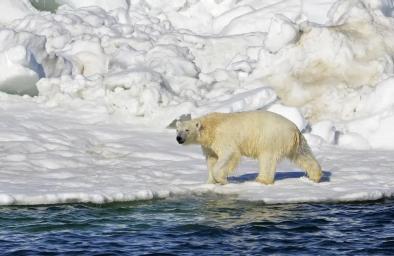Science Source
Impact of declining Arctic sea ice on winter snowfall
- States that anomalously large snowfall in recent winters has affected large parts of North America, Europe, and east Asia as the Arctic has been warming strongly in recent decades
- Demonstrates that the decrease in autumn Arctic sea ice area is linked to changes in the winter Northern Hemisphere atmospheric circulation that have some resemblance to the negative phase of the winter Arctic oscillation
- States the atmospheric circulation change linked to the reduction of sea ice shows much broader meridional meanders in midlatitudes and clearly different interannual variability than the classical Arctic oscillation
- States this circulation change results in more frequent episodes of blocking patterns that lead to increased cold surges over large parts of northern continents
- States that the increase in atmospheric water vapor content in the Arctic region during late autumn and winter, driven locally by the reduction of sea ice, provides enhanced moisture sources, supporting increased heavy snowfall in Europe during early winter and the northeastern and midwestern United States during winter
- Concludes that the recent decline of Arctic sea ice has played a critical role in recent cold and snowy winters
Related Content
Science Source
| Nature
Regime shift in Arctic Ocean sea ice thickness
Headline

Feb 21, 2023 | Climate Nexus Hot News
Ice Absent From Great Lakes, New England
Headline

Feb 16, 2023 | Climate Nexus Hot News
Antarctic Sea Ice At Lowest Recorded Levels, Again; Thwaites Glacier's Weak Spots Getting Weaker
Headline

Jan 25, 2023 | Climate Nexus Hot News
Melting Sea Ice Could Increase Threatens Polar Bears, People


